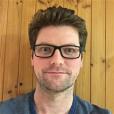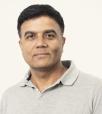ANSTO Instruments
ANSTO's facilities in Sydney include access to neutron beam instruments, X-ray and infrared instruments, biological and chemical deuteration, accelerators, and an array of other capabilities and techniques.

Showing 221 - 240 of 628 results
ANSTO's facilities in Sydney include access to neutron beam instruments, X-ray and infrared instruments, biological and chemical deuteration, accelerators, and an array of other capabilities and techniques.

Efficient electro-catalysis of hydrogen from seawater represents a low-cost, abundant source of clean energy.

X-ray crystallography at the Australian Synchrotron contributed to major research findings.
A limited amount of travel support is available to students from AINSE member institutes to travel to the New User Sympsosium.

The User Advisory Committee (UAC) are pleased to present this year's invited speakers.
Advanced X-ray techniques have revealed new structural details about the specific arrangement of atoms in conjugated polymers, an important class of materials that are used in LEDs, organic solar cells, transistors, sensors and thermoelectric power devices.

ANSTO can analyse minute amounts of organic or inorganic matter embedded in a complex material

ANSTO offers a range of specialist capabilities in the area of food and food production that provide insights other approaches cannot.

The Australian Synchrotron provides funding support for successful beamtime applicants in the form of travel funding and/or onsite accommodation. Travel funds granted are to be used solely to cover the majority of the cost to travel to the AS facility. The User Office will book accommodation for interstate user groups at the onsite AS Guesthouse.

The THz/Far-IR Beamline couples the high brightness and collimation of a bend-magnet synchrotron radiation to a Bruker IFS125HR spectrometer providing high-resolution spectra (0.00096 cm-1) with signal to noise ratio superior to that of thermal sources up to 1350 cm-1 for gas-phase applications; the beamline also delivers signal to noise ratio superior to that of thermal sources up to 350 cm-1 for condensed phase samples.

Originally from Switzerland, Dr Häusermann gained his PhD in x-ray diffraction and synchrotron techniques at King’s College London.

Dr Santosh Panjikar is a beamline scientist at the MX beamlines of the ANSTO, Australian Synchrotron. A large part of his scientific role involves assisting scientists from the crystallography user commun
An unusual and very exciting form of carbon - that can be created by drawing on paper - looks to hold the key to real-time, high throughput DNA sequencing, a technique that would revolutionise medical research and testing.